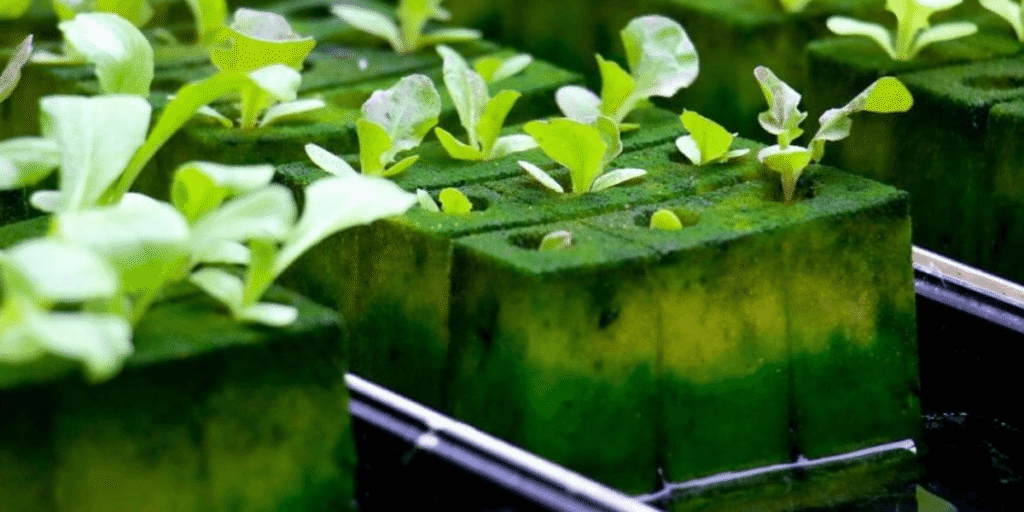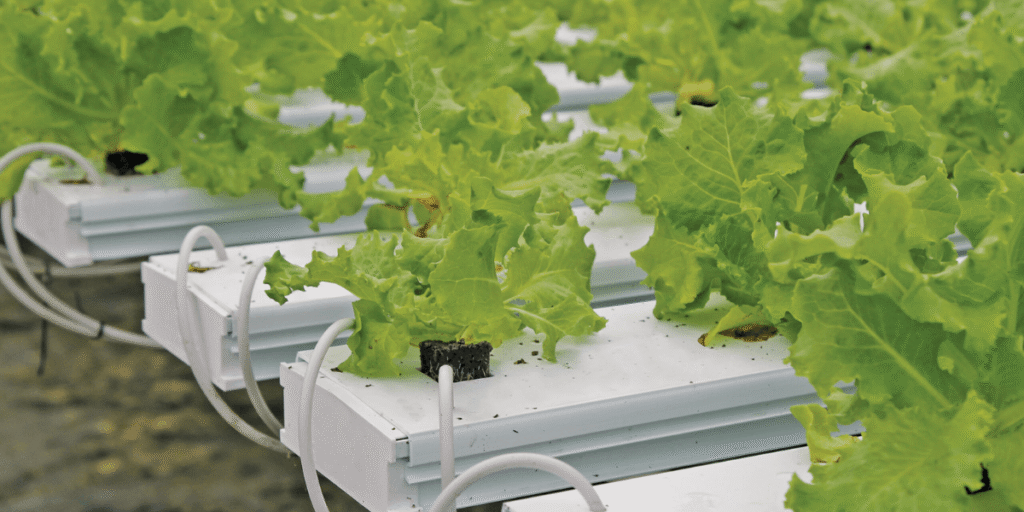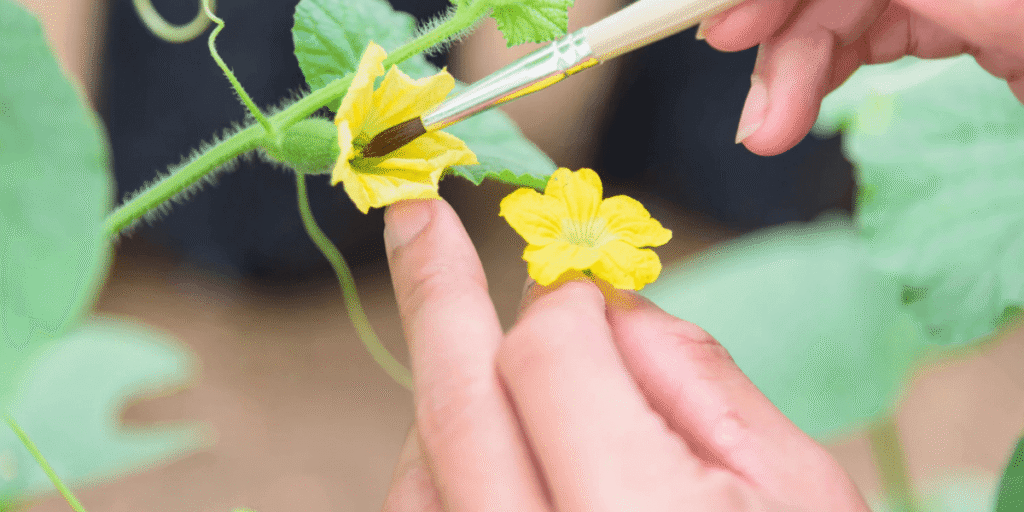Prevent Algae in Hydroponic systems is one of the most important lessons every grower must learn. When I first started my hydroponic journey, I felt like a proud parent, watching my plants grow day by day. Then, one morning, I discovered an uninvited guest. A slimy, green film had started to coat my reservoir and tubes. My nutrient solution was no longer clear; it had turned into a murky green soup. I panicked, thinking my plants were getting sick. Soon, I learned that this “guest” was algae, a challenge almost every hydroponic gardener eventually faces.
Algae is not just unattractive; it poses a real threat to plant health. The good news is that it can be prevented with the right approach. In this guide, I will explain what algae is, why it becomes a problem, and the most effective ways to keep it out of your hydroponic system.
What Is Algae in Hydroponics
Algae are simple, plant-like microorganisms that grow in wet and nutrient-rich environments. In hydroponic systems, they often appear as a green or slimy layer on surfaces that receive light.
Green algae, or Chlorophyta, are the most common type and usually form a thin green film on reservoirs, tubes, or growing media. Blue-green algae, also known as Cyanobacteria, are actually bacteria and can sometimes be harmful to plants, appearing as dark green or blue-green slime. Filamentous algae look like fine strands and can wrap around plant roots, blocking nutrient absorption.
Types of Commonly Algae in Soilless Systems
In hydroponic systems, there are three common types of algae, each with distinct growth habits and potential impacts on plants. Understanding these characteristics can help manage algae more effectively.
Green Algae (Chlorophyta) are the most common type in hydroponics. They usually appear as a green layer that forms easily on the surfaces of reservoirs, tubes, or growing media. Green algae reproduce quickly and, if left unchecked, can cover container surfaces and interfere with water flow and nutrient absorption.
Blue-Green Algae (Cyanobacteria) are actually a type of bacteria and can sometimes produce toxins that negatively affect plant health. They often appear as dark green or blue-green slimy layers on the water surface or along the inside of pipes, creating stressful conditions for plants.
Filamentous Algae have a hair-like structure and tend to wrap around plant roots, which can block the uptake of water and nutrients. Heavy growth of filamentous algae can cause root oxygen deficiency and nutrient stress, ultimately affecting plant growth and yield.
Recognizing these types of algae is important because each requires slightly different control methods. Identifying the specific type allows growers to implement more precise management strategies, effectively limiting algae growth and protecting the health of hydroponic plants.

Why Unwanted Organisms Harm Plant Health
Algae in hydroponic systems can cause multiple problems that negatively impact plant growth and overall system performance. One of the main issues is nutrient competition. Algae consume nutrients in the water that are meant for the plants, leading to deficiencies and slower growth. In addition, algae reduce the oxygen levels in the nutrient solution. During their growth, algae consume dissolved oxygen, which can stress plant roots and even cause root suffocation.
The presence of algae also creates a favorable environment for harmful pathogens, increasing the risk of root diseases such as root rot. This not only affects plant health but can quickly spread throughout the entire hydroponic system. Accumulated algae can also cause physical blockages. Algae growing on or inside pipes, pumps, and drip emitters can disrupt nutrient circulation and make system maintenance more difficult.
Algae growth not only competes with plants for nutrients but can also create conditions that promote root rot and other waterborne diseases. For more detailed strategies on preventing and managing these issues, check out our guide on How to Minimize Water-Borne Diseases in Hydroponics.

How to Keep Nutrient Solutions Clean and Clear
Preventing algae growth is essential for maintaining healthy plants and a well-functioning hydroponic system. One of the most effective strategies is to block light. Algae need light to photosynthesize and grow, so it is recommended to cover all exposed surfaces of the nutrient solution and tubing with opaque materials. Using dark or non-transparent containers and covers can greatly reduce the chances of algae establishing in your system.
Regular maintenance is another important measure. Routine cleaning of reservoirs, pipes, and other components helps remove any organic matter or early algae growth before it becomes a problem. Flushing the system and disinfecting containers and tubes ensures that spores and debris do not accumulate and create favorable conditions for algae.
Temperature control also plays a key role in algae prevention. Algae tend to grow faster in warm environments, so keeping the nutrient solution at a stable, moderate temperature between 18 and 24 degrees Celsius can slow down their growth. Using shade, cooling methods, or temperature-regulated systems can help maintain this optimal range and create an environment that favors plant growth over algae proliferation.
By combining light control, regular maintenance, and temperature management, hydroponic growers can significantly reduce the risk of algae and maintain a healthier growing environment for their plants.
Effective Prevention and Treatment Options
| Prevention Method | Specific Action | Pros | Notes |
|---|---|---|---|
| Physical Barriers | Use opaque covers for reservoirs, tubes, and exposed surfaces | Prevents algae from establishing in the first place | Ensure all light leaks are sealed. Greenfuturehydro systems use fully opaque materials to block light effectively from the start |
| Hydrogen Peroxide (H₂O₂) | Add 1–2 teaspoons of 3% hydrogen peroxide per gallon of water | Inexpensive, adds oxygen, helps kill algae | Can harm beneficial bacteria; use cautiously and avoid combining with microbial supplements |
| Beneficial Microbes | Add according to product instructions | Establishes a natural microbial barrier by competing for nutrients | Must be used consistently and not mixed with chemical sterilizers |
| UV Sterilizer | Run continuously in the system’s reservoir | Provides highly effective, chemical-free sterilization | Requires initial investment and regular bulb replacement |
Why Stopping Problems Early Works Better Than Fixing Them Later
Taking proactive measures to prevent algae growth is always more effective than trying to remove it after it appears. One key strategy is to ensure complete sealing and light control. It is not enough to cover only the surface of the reservoir; all pipe connections and exposed areas must be shielded from light to prevent algae from establishing.
Another important measure is to avoid the accumulation of organic matter. Fallen leaves, root fragments, and other debris in the system provide nutrients for algae, creating an environment where they can thrive. Regularly removing these materials helps maintain a clean system and reduces the risk of algae growth.
Controlling the pH level of the nutrient solution also plays a significant role. Algae tend to grow more rapidly in alkaline conditions, so keeping the pH within the optimal range for your plants can naturally inhibit their development. By combining light control, debris management, and pH regulation, hydroponic growers can create conditions that favor plant growth while minimizing the chances of algae becoming a problem.

Ways to Clean and Restore Your Hydroponic System
If algae has already started growing in your hydroponics system, it is crucial to address the issue quickly to prevent further damage to your plants and system components. The first step is physical removal. Carefully scrub all visible algae from surfaces including the reservoir, tubing, net pots, and other system components. Using a soft brush or cloth can help remove green or slimy deposits without harming your equipment or plant roots. Manually removing as much algae as possible will improve the effectiveness of subsequent treatments.
After physical cleaning, chemical treatment can be used to eliminate any remaining algae. A mild hydrogen peroxide solution is often very effective. For a standard 3% solution, add 1 to 2 teaspoons of hydrogen peroxide per gallon of water and circulate the solution through the system for several hours. This helps kill the algae and increases oxygen levels in the nutrient solution, which benefits plant roots. Be careful not to overuse hydrogen peroxide, as high concentrations or prolonged exposure may harm beneficial microbes or sensitive plants.
Combining thorough physical cleaning with careful chemical treatment allows you to regain control over algae growth and restore a healthier growing environment for your hydroponic plants. Regular monitoring of your hydroponic system can help detect algae growth early. If you notice unusual changes in water clarity, pH, or plant health, refer to our step-by-step guide on How to Troubleshoot Common Hydroponic Issues for practical solutions.
Using Hydrogen Peroxide Safely in Water-Based Gardening
Hydrogen peroxide is an effective tool for controlling algae in hydroponic systems, but it must be used carefully to protect plants and beneficial microbes. The following steps provide a safe and practical guideline for using a standard 3% household hydrogen peroxide solution.
- Measure the Solution
For every gallon of nutrient solution, add approximately 15 to 30 milliliters of 3% hydrogen peroxide. This is equivalent to about one to two teaspoons per gallon. Use a clean measuring spoon or syringe to ensure accurate dosing. - Add to the System
Slowly pour the measured hydrogen peroxide directly into the reservoir or nutrient solution while the water is circulating. Circulating the solution helps distribute the hydrogen peroxide evenly throughout the system, reaching all areas where algae may be present. - Circulate and Wait
Allow the hydrogen peroxide to circulate for several hours. During this time, it will help break down algae and increase the dissolved oxygen in the solution, which benefits plant roots. Avoid leaving the solution for longer than necessary to minimize potential stress to sensitive plants. - Frequency of Use
Adding hydrogen peroxide once a week is typically sufficient for algae prevention. For active algae outbreaks, it can be used more frequently, but always monitor plants for any signs of stress or damage. - Safety Precautions
Always wear gloves and eye protection when handling hydrogen peroxide, as it can irritate skin and eyes. Store the solution in a dark, cool place away from children and pets. Never mix hydrogen peroxide with other chemicals unless specifically instructed, as this can create harmful reactions.
By following these steps, hydroponic growers can safely use hydrogen peroxide to control algae while maintaining a healthy environment for their plants. Consistent, careful use helps prevent algae from taking hold and ensures optimal nutrient uptake.

Tools for Monitoring Water Quality and Detecting Issues Early
Regular monitoring is essential for keeping algae under control in a hydroponic system. The first step is to frequently inspect the roots, reservoirs, and other parts of the system. Look for early signs of algae such as green films, slimy layers, or filamentous strands. Addressing these issues promptly can prevent them from spreading and becoming more difficult to manage.
Using water quality monitoring tools can also help detect environmental conditions that favor algae growth. Measuring electrical conductivity (EC), pH, and dissolved oxygen levels provides valuable insight into the nutrient solution and helps identify potential problems before algae become established. Monitoring these parameters consistently allows growers to make timely adjustments to maintain optimal conditions for plants while discouraging algae.
Keeping a photographic record of the system over time is another useful strategy. Taking regular photos of the roots, reservoirs, and tubing allows you to visually track changes and identify algae growth trends. Comparing images over weeks or months can help you detect gradual increases in algae before they become a serious issue and can also serve as a reference for evaluating the effectiveness of preventive measures.
By combining regular inspections, water quality monitoring, and photographic records, growers can implement an early warning system that helps maintain a clean and healthy hydroponic environment while minimizing the risk of algae outbreaks.
Greenfuturehydro Products That Help Maintain a Healthy System
When it comes to preventing and managing algae in hydroponic systems, a few simple strategies can make a big difference. Controlling light exposure is key, and using opaque reservoirs and tubing helps keep algae from taking hold in the first place. Regular maintenance such as cleaning and monitoring nutrient solution parameters also prevents buildup and keeps plants healthy.
For growers looking for easy-to-use solutions, our modular systems make maintenance effortless. For example, Dutch Bucket setups are perfect for larger crops and allow for straightforward cleaning between cycles. NFT growing racks provide smooth channels that reduce algae accumulation and improve water circulation, while vertical hydroponic towers maximize space and keep nutrient solutions protected from light.
If algae does appear, start with thorough physical cleaning of reservoirs, tubing, and net pots. Mild hydrogen peroxide solutions can then be circulated safely to remove any remaining growth while boosting oxygen levels in the nutrient solution. Combining these preventive and corrective measures ensures a clean, productive system and healthier plants, all while making maintenance simple and efficient.

Common Questions on Keeping Hydroponics Free of Growth
Q1: What causes algae in my hydroponic system?
Algae grow when nutrient-rich water is exposed to light. Warm temperatures, leftover plant debris, and imbalanced pH levels also make it easier for algae to thrive.
Q2: How can algae affect my plants?
Algae compete with plants for nutrients and oxygen. They can suffocate roots, reduce nutrient uptake, encourage harmful pathogens, and even clog pumps or tubes in your system.
Q3: How do I stop algae from growing in hydroponics?
Cover all nutrient solution surfaces and tubing with opaque materials, keep the water temperature stable, remove plant debris regularly, and maintain the proper pH range. Using beneficial microbes can also help prevent algae from taking hold.
Q4: What’s the best way to get rid of algae that’s already growing?
Start by scrubbing off visible algae from reservoirs, tubes, and net pots. Then circulate a mild hydrogen peroxide solution to kill any remaining algae and boost oxygen levels. Always follow safe dosing instructions to avoid harming plants.
Q5: Are there products that make algae management easier?
Yes. Greenfuturehydro systems have fully opaque reservoirs and tubing to block light, easy-to-clean modular components, and support safe use of treatments like hydrogen peroxide. These features make it simpler to prevent algae and maintain a healthy hydroponic system.
Conclusion: Building a Clean and Stable Growing Environment
Preventing algae is far more effective than trying to remove it once it has appeared. Maintaining a clean system and ensuring that nutrient solutions and exposed surfaces remain in darkness are essential steps for successful hydroponic gardening. Regular inspection and maintenance, combined with proper light control and temperature management, create an environment that discourages algae while supporting healthy plant growth. By prioritizing these preventive measures, growers can reduce maintenance time, protect their plants from nutrient and oxygen competition, and keep their hydroponic systems operating efficiently.
Protecting Your Indoor Farm from Future Contamination
Growing your own hydroponic vegetables can be simple and rewarding. By keeping your system clean, shielding nutrient solutions from light, and regularly monitoring water quality, you can prevent algae and ensure your plants stay healthy. A few small daily habits go a long way in making your indoor garden flourish.
To make algae prevention even easier, check out Greenfuturehydro’s products. Our fully opaque reservoirs, modular systems, and user-friendly maintenance tools are designed to keep your hydroponic setup clean, efficient, and hassle-free. Whether you are just starting out or managing a larger garden, these products simplify care and help your plants thrive.
If you need advice or personalized support, the Greenfuturehydro team is always available. Reach out at info@greenfuturehydro.com or call +86 13487543942. We are dedicated to helping you build a productive, sustainable, and enjoyable indoor garden.
Follow us on Instagram at @Greenfuturehydro for practical tips, inspiring stories, and real experiences from hydroponic growers around the world. Share your progress, learn from others, and experience the joy of growing fresh, vibrant vegetables at home with confidence.


